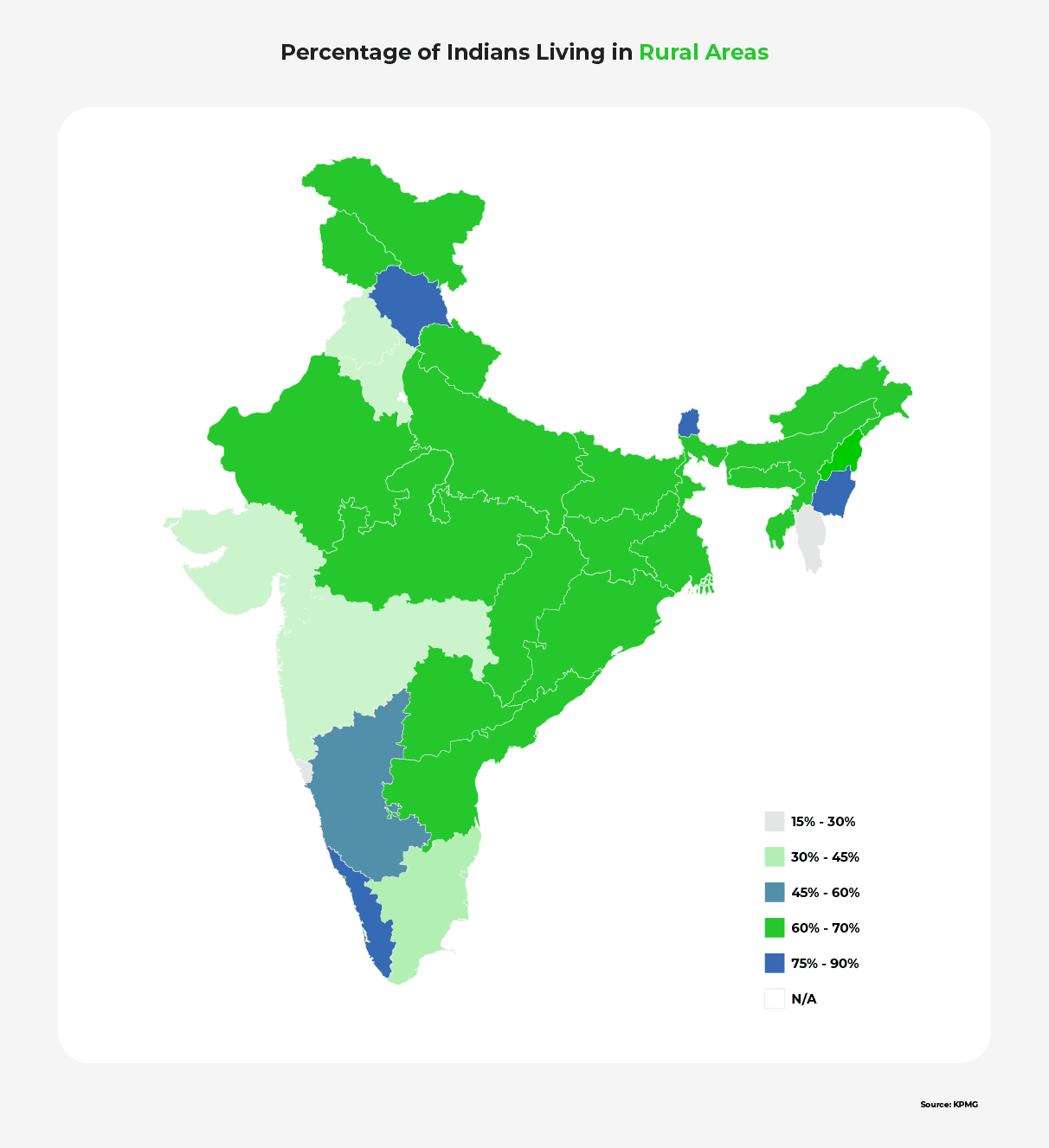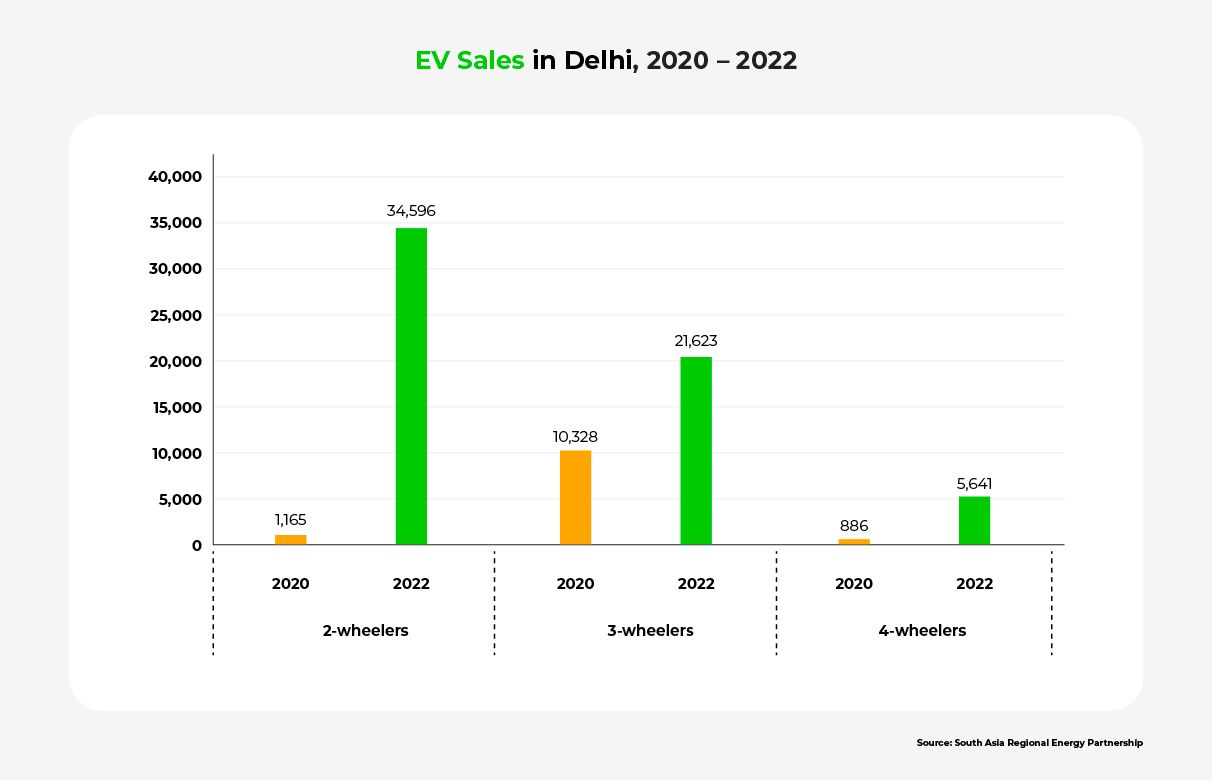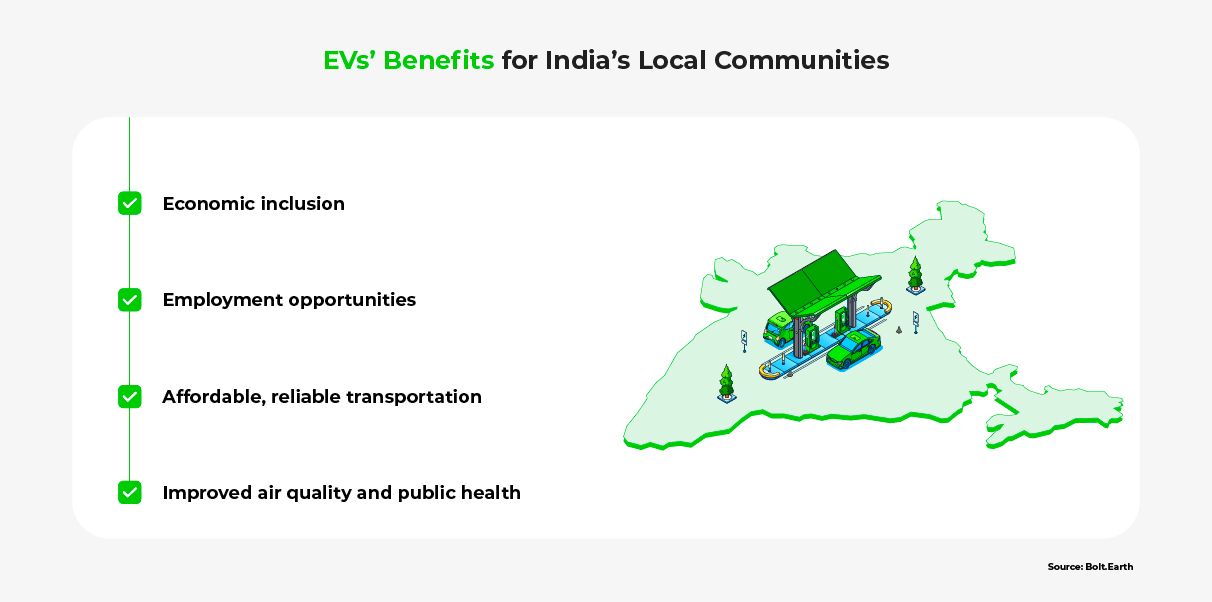How India’s EV Ecosystem Supports Local Communities
Raghav Bharadwaj
Chief Executive Officer
Published on:
14 Sep, 2023
Updated on:
24 Nov, 2025

The EV ecosystem in India is creating new opportunities for inclusive growth, from job creation to the development of sustainable infrastructure. The transition to EVs brings along a wave of positives: cleaner air, reduced noise pollution, greater energy autonomy, and job creation. However, maximizing this potential for sustainable development requires various stakeholders to prioritize social and economic development at the local level.
This article aims to explore the social and economic implications of EV adoption while explaining how local communities can actively participate in and benefit from this transition. Specifically, it addresses:
- What is the current state of EV adoption in India’s local communities?
- Why is India facing challenges in promoting further adoption of EVs in these local communities?
- How can India’s local communities benefit from strategies to improve EV adoption?
Current State of EV Infrastructure and Adoption in India’s Local Communities
Transportation is pivotal for economic growth in India. EVs have particular potential to change the face of mobility and provide local communities with new opportunities for better healthcare, educational access, women’s empowerment, and enhanced quality of life. To unlock these benefits, however, local communities will need to accept EVs as the norm. The Ministry of Road Transport and Highways, acknowledging the need to promote EV adoption, has allocated a hefty budget of Rs 2,70,435 crore for nationwide road and highway construction. These expanding road networks, coupled with rising fuel prices, are propelling EV adoption across both rural and urban areas.
Rural areas, which are conducive to easy EV charging because every village has access to electricity and most homes are independent, are finding EVs particularly advantageous. Fiscal incentives further sweeten the deal, encouraging rural dwellers to embrace this green technology.

Urban areas are also seeing a surge in EV uptake, especially in the two-wheeler and three-wheeler categories. The lower running costs and zero tailpipe emissions from EVs are reducing air pollution, thus enhancing public health and overall quality of life.
Although these developments mark a promising start, India’s EV adoption rates remain low, due to various challenges within the current EV ecosystem. Surmounting these obstacles is essential to ensuring sustainable growth in local communities.
Challenges to EV Adoption in India’s Local Communities
Many challenges impede EV adoption in India’s local communities. Below, we examine some key hurdles.
Limited Access to Financial and Technological Resources
Electric vehicles often cost 15 – 20% more than their conventional counterparts, making affordability a major roadblock for individuals and communities with limited financial resources. In fact, an overwhelming 60% of Indian consumers report that EVs are beyond their budget.
Furthermore, local communities often struggle to access the latest advancements in EV technology, due to limited exposure and availability. As a result, these communities miss out on many of the benefits that modern EVs offer, such as improved range, performance, and energy efficiency.
Scarcity of EV Charging Infrastructure
A dearth of charging stations in local communities, particularly in rural and remote areas, makes EVs an impractical option. This scarcity is especially problematic because it contributes to ‘range anxiety’ — the fear of running out of battery power with no charging station in sight — among potential EV owners. It also limits local communities’ ability to reap economic opportunities linked to electric mobility, such as reduced operating costs, and new jobs in the EV charging sector.
Unawareness of the Benefits of EVs
Many consumers in local communities are unfamiliar with EVs’ advantages, such as lower operating costs, a reduced environmental footprint, and government incentives. This knowledge gap fuels skepticism and misinformation, resulting in reluctance to transition to EVs, and contributing to the slow adoption rates.
Addressing these challenges is crucial to stimulating local community engagement, creating an environment conducive to EV adoption, and unlocking the benefits of EV technology.
Streamlining the Path to EV Adoption: How Can We Strengthen India’s EV Ecosystem?
Empowering local communities to harness the economic and environmental benefits of EVs requires a concerted effort from governments, automakers, and charging point providers. The next section delves into key strategies that these stakeholders can employ to surmount the obstacles to EV adoption.
Building EV Charging Infrastructure in Rural and Remote Areas
Constructing reliable EV charging infrastructure to reduce range anxiety is crucial. Governments can establish charging stations and stimulate private-public investment through affordable funding. Additionally, automakers, original equipment manufacturers (OEMs), and charging providers can install charging infrastructure in parking lots, residential communities, small businesses, and other areas offering high connectivity and accessibility. These investments can boost economic growth by attracting visitors and supporting local businesses.
One successful example is Bolt.Earth Lite, a universal charging socket compatible with all EV models that can be easily installed at homes and small businesses. Measures like these ensure equal access to EV charging.
Government Initiatives and Incentives Promoting EV Adoption
Government incentives play a vital role in encouraging EV adoption within local communities. Financial motivators, such as tax incentives, state-specific subsidies, and registration fee waivers, make EV ownership viable for more community members. For instance, India’s Faster Adoption and Manufacturing of Electric Vehicles (FAME) program offers subsidies to EV buyers, while some states provide additional benefits like road tax exemptions and reduced electricity tariffs for EV charging.
The Delhi government’s EV policy is a shining example of how such initiatives can effect change. Thanks to appealing incentives and a simplified policy for setting up charging stations, the number of EV two-wheelers in Delhi surged from 1,165 in 2020 to 34,596 in 2022. During the same period, EV three-wheelers rose from 10,328 to 21,623, while four-wheelers jumped from 886 to 5,641.

Engaging and Educating Local Communities Through Outreach and Awareness Programs
Collaborative programs involving governments, the private sector, and community leaders and representatives can help dispel misconceptions and enlighten the public about EVs and their benefits. Stakeholders can organize outreach campaigns, events, talk shows, and Q&A sessions to address community queries and offer guidance on setting up charging infrastructure and accessing financial incentives.
Successful initiatives include e-Amrit, a one-stop website providing comprehensive information about EV models, business opportunities, subsidies, charging station locations, and the benefits of EVs. Local leaders can use resources like this to educate their communities about the potential of EVs.
The aforementioned strategies, if promptly executed, can address the obstacles to EV adoption, empowering diverse communities to benefit from a robust EV ecosystem.
How India’s EV Ecosystem Can Benefit Local Communities
India’s growing EV ecosystem holds immense potential to foster inclusive growth and benefit local communities across the country. Strengthening this ecosystem ensures that the advantages of electric mobility reach all corners of society. This section will explore these benefits.
Economic Inclusion through EV Adoption
Economic inclusion, or inclusive growth, involves economic advancement that benefits everyone, including members of marginalized or underprivileged communities. Amplifying EV adoption in local communities can democratize access to clean, affordable transportation. This accessibility enables faster commutes and offers cost-effective transport for agricultural goods, the backbone of rural communities. Other outcomes of EV adoption include increased income, improved market access, enhanced services, and reduced mobility disparity. Specifically, and importantly, EV adoption empowers women to seek work and education beyond their immediate surroundings, contributing to a fairer and more prosperous society.
Employment Opportunities Emerging from the EV Ecosystem
The growth of India’s EV ecosystem forges new job opportunities in local communities. It also uncovers new income sources for small businesses, landowners, and even households willing to establish public EV charging stations. The expansion of EV-related businesses, like manufacturing, maintenance, and sales, is generating additional employment opportunities across various skill levels. As EV adoption accelerates, further investments in the sector will continue to spur significant job growth.
Affordable, Reliable Transportation Through EVs
EVs can offer transformative change in areas where traditional transportation modes are limited or unreliable. Lack of transportation access has historically thwarted local community development, especially for remote and marginalized communities living on the periphery of Indian villages. With nearly half of the rural population walking between 2 and 10 kilometers daily for work and education due to high petrol and diesel costs, EVs can provide an affordable and reliable alternative. This improved mobility can bridge communities, enhance access to essential services such as jobs, healthcare, and education, and foster regional socio-economic development.
Improved Air Quality and Public Health
Pollution in India’s rural areas is nearly three times higher than in urban areas, causing approximately 700,000 deaths each year. Although vehicular traffic contributes only minimally to this pollution, EVs can indirectly reduce air pollution levels by offering alternative employment opportunities for rural youth and steering them away from pollution-causing activities involving brick kilns and hot mix plants. The result is cleaner air, reduced respiratory and cardiovascular health issues, better overall well-being, and decreased healthcare costs.

As India’s EV ecosystem continues to grow and evolve, these benefits will magnify, positively influencing local communities nationwide. However, to achieve this promising future, India must first address existing challenges, promote innovation, and engage various stakeholders in ensuring a sustainable and inclusive transition to electric mobility.
The Promising Future of India’s EV Ecosystem
The transformative power of India’s EV ecosystem promises to drive economic development and enhance the quality of life for local communities. Adopting EVs paves the way for numerous benefits, including job creation, pollution reduction, and improved access to transportation.
Developing an inclusive EV ecosystem with reliable charging infrastructure and informed decision-making is a prerequisite for reaping these benefits. It’s essential to ensure that everyone can access the opportunities presented by this shift towards electric mobility.
Looking to the future, EVs have the potential to weave together economic progress, environmental sustainability, and an improved quality of life in India. By using tech innovation to build something substantial, investing in infrastructure, promoting awareness, and fostering collaboration, India can unlock the full potential of its EV ecosystem. This pathway promises a future that is not only greener but also prosperous and equitable for all local communities.
The exciting potential of India’s EV ecosystem to drive inclusive growth encourages everyone to contribute to its development. Let’s all participate in this electrifying journey towards a sustainable and inclusive future!
For more information about the impact of India’s EV ecosystem on local communities, please see the FAQ and Resources sections below.
FAQ
What does inclusive growth mean in the context of India’s EV ecosystem?
Inclusive growth within India’s EV ecosystem refers to ensuring that the benefits of economic development reach all communities. This includes creating equitable opportunities for all individuals and fostering upward mobility and an enhanced quality of life, thereby contributing to a balanced and prosperous future.
What barriers to EV adoption do India’s local communities face?
Several barriers impede EV adoption in India’s local communities, including limited charging infrastructure, high initial costs, a lack of financing options, and low awareness about EV benefits and operation. Range anxiety and the scarcity of EV models in remote areas further hinder widespread adoption.
How are EVs impacting local communities in India?
EVs have significant positive impacts on local communities across India. These include job creation in sectors like manufacturing, maintenance, and charging infrastructure; reduction of air pollution; improving public health; enhanced transportation access for both rural and urban communities; and contributions towards energy diversification and sustainability.
What economic opportunities does the EV ecosystem present for local communities?
The EV ecosystem introduces economic opportunities like job creation, enhanced mobility and work access, revenue generation for households and small businesses through setting up charging stations, and increased demand for local services. This fosters entrepreneurship and stimulates economic development at the community level.
How is India’s government supporting EV ecosystem development in local communities?
India’s government supports EV ecosystem development by offering financial incentives like tax rebates, subsidies, and grants; providing vital information for stakeholders via its website; implementing policies to boost EV and component manufacturing; and investing in charging infrastructure deployment.
How is India’s private sector contributing to the development of EV infrastructure in local communities?
India’s private sector contributes by investing in the installation of EV charging stations across urban and remote areas, manufacturing and deploying charging equipment, and partnering with government entities to speed up the establishment of charging infrastructure and promote EV adoption in local communities.
Resources
Engineering and Technology Magazine: EVs drive into rural India
Learn more about EVs’ effect on rural communities here.
MDPI: Social Aspects of Electric Vehicles Research—Trends and Relations to Sustainable Development Goals
Discover EVs’ social impact here.
Current Science: Identification and analysis of social factors responsible for the adoption of electric vehicles in India
Explore motivations for EV adoption here.
NASSCOM: Challenges faced while scaling up EV adoption
Understand the challenges for EV adoption here.
Taylor & Francis Online: Factors influencing adoption of electric vehicles – A case in India
Learn about the factors that influence EV adoption in India here.





